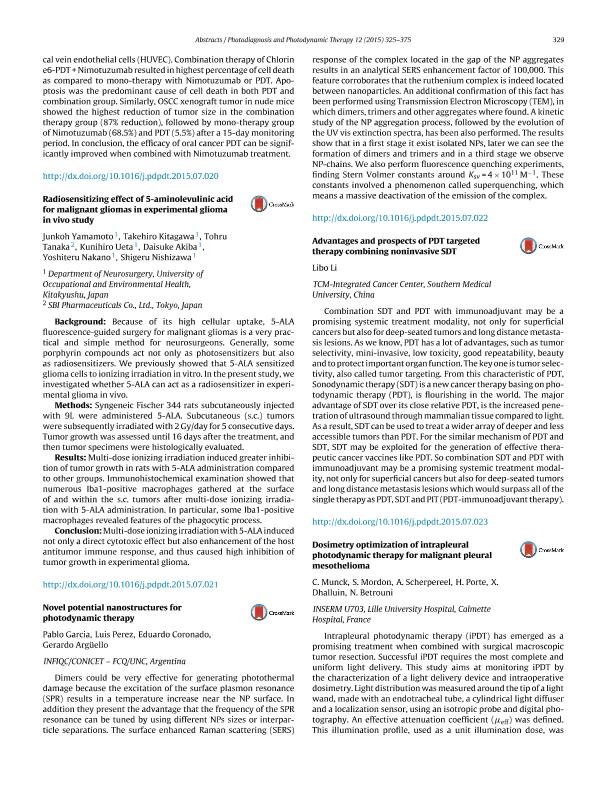Artículo
Novel potential nanostructures for photodynamic therapy
Fecha de publicación:
07/2015
Editorial:
Elsevier Science
Revista:
Photodiagnosis Photodynamic Therapy
ISSN:
1572-1000
Idioma:
Inglés
Tipo de recurso:
Artículo publicado
Clasificación temática:
Resumen
Dimers could be very effective for generating photothermal damage because the excitation of the surface plasmon resonance (SPR) results in a temperature increase near the NP surface. In addition they present the advantage that the frequency of the SPR resonance can be tuned by using different NPs sizes or interparticle separations. The surface enhanced Raman scattering (SERS) response of the complex located in the gap of the NP aggregates results in an analytical SERS enhancement factor of 100,000. This feature corroborates that the ruthenium complex is indeed located between nanoparticles. An additional confirmation of this fact has been performed using Transmission Electron Microscopy (TEM), in which dimers, trimers and other aggregates where found. A kinetic study of the NP aggregation process, followed by the evolution of the UV vis extinction spectra, has been also performed. The results show that in a first stage it exist isolated NPs, later we can see the formation of dimers and trimers and in a third stage we observe NP-chains. We also perform fluorescence quenching experiments, finding Stern Volmer constants around Ksv = 4 × 1011 M−1. These constants involved a phenomenon called superquenching, which means a massive deactivation of the emission of the complex.
Palabras clave:
Pdt
,
Gold
,
Nanoparticles
,
Plasmonics
Archivos asociados
Licencia
Identificadores
Colecciones
Articulos(INFIQC)
Articulos de INST.DE INVESTIGACIONES EN FISICO- QUIMICA DE CORDOBA
Articulos de INST.DE INVESTIGACIONES EN FISICO- QUIMICA DE CORDOBA
Citación
Garcia, Pablo Facundo; Pérez, Luis Alberto; Coronado, Eduardo A.; Arguello, Gerardo; Novel potential nanostructures for photodynamic therapy; Elsevier Science; Photodiagnosis Photodynamic Therapy; 12; 3; 7-2015; 329-329
Compartir
Altmétricas




